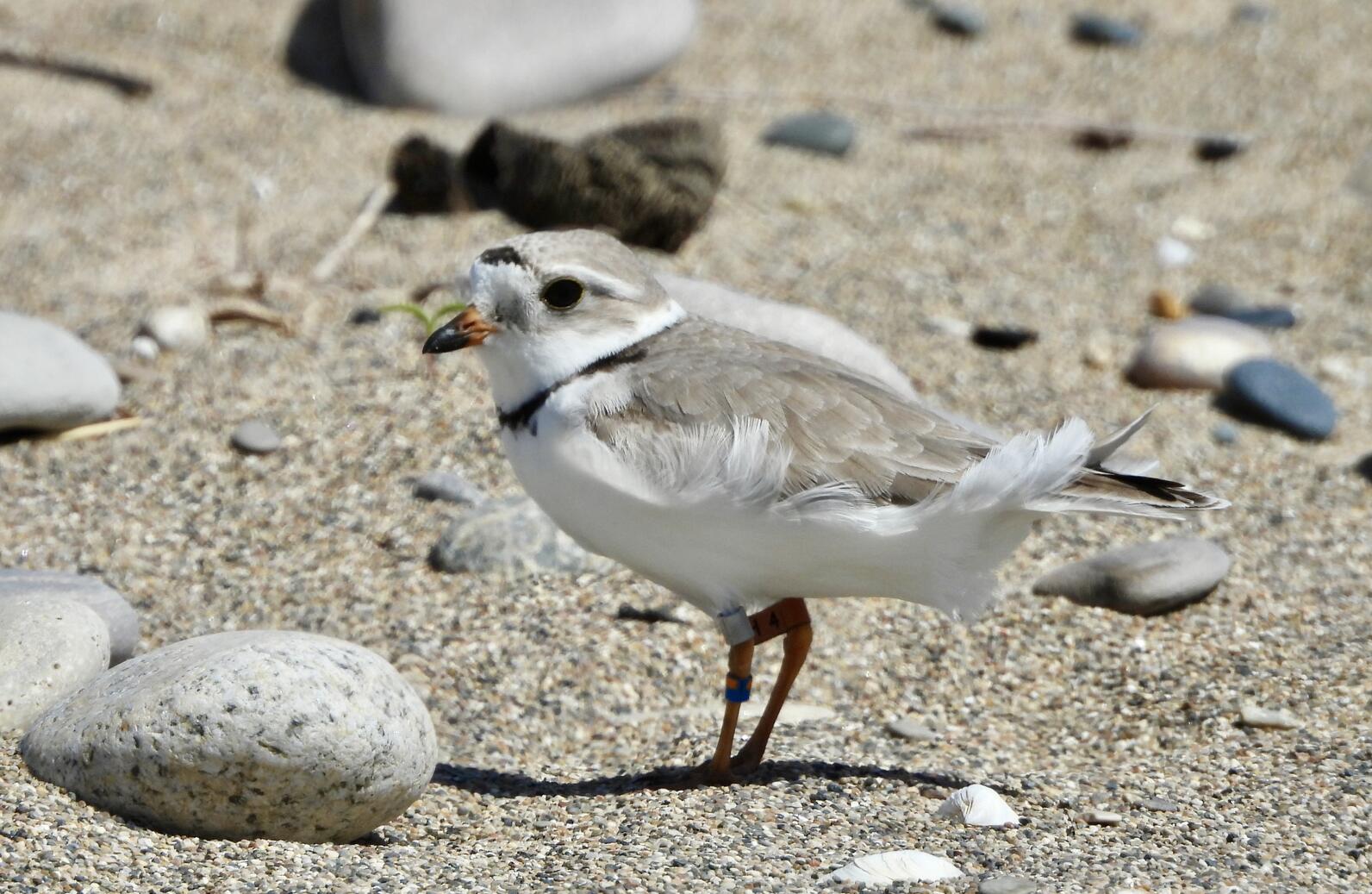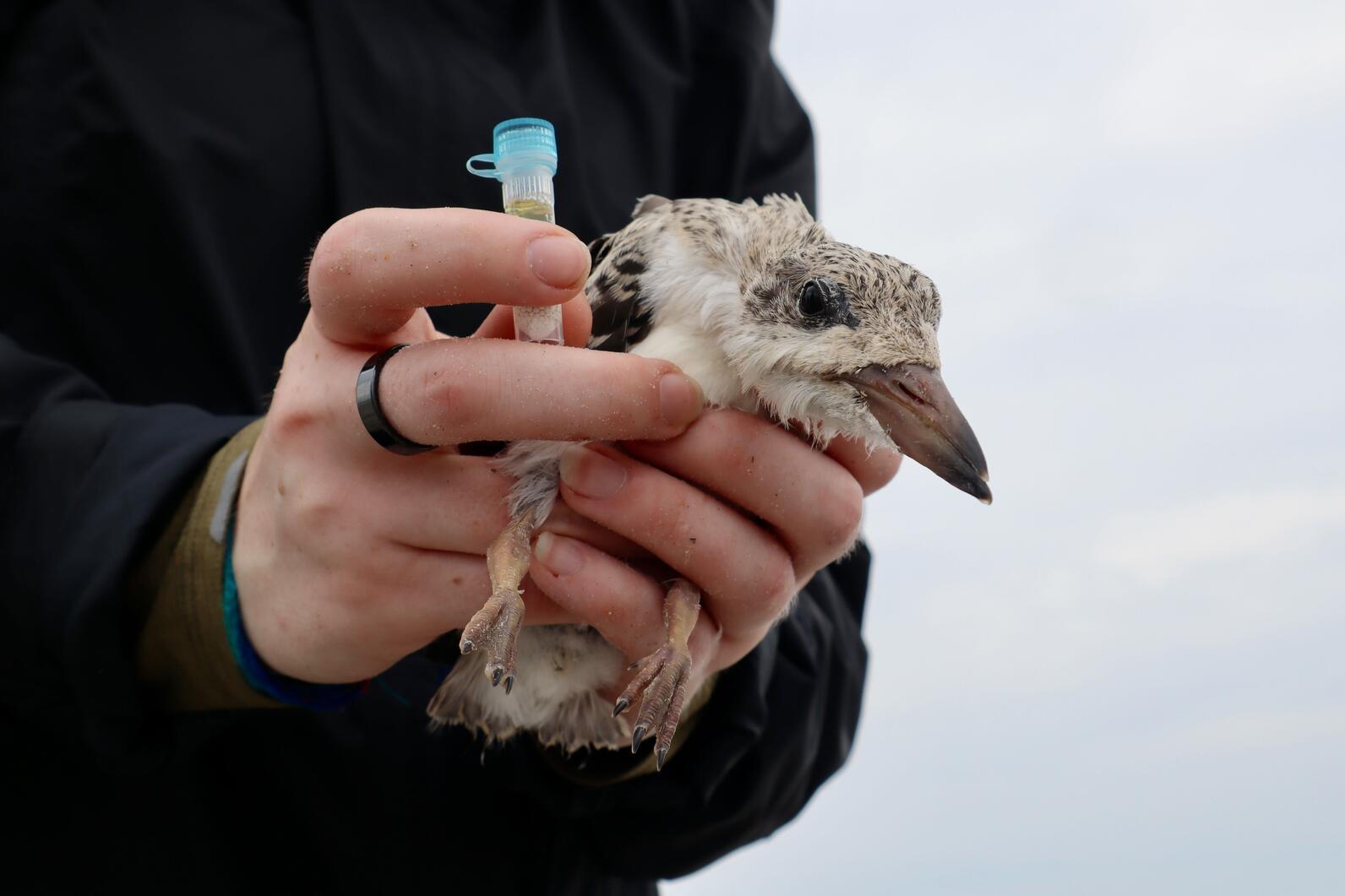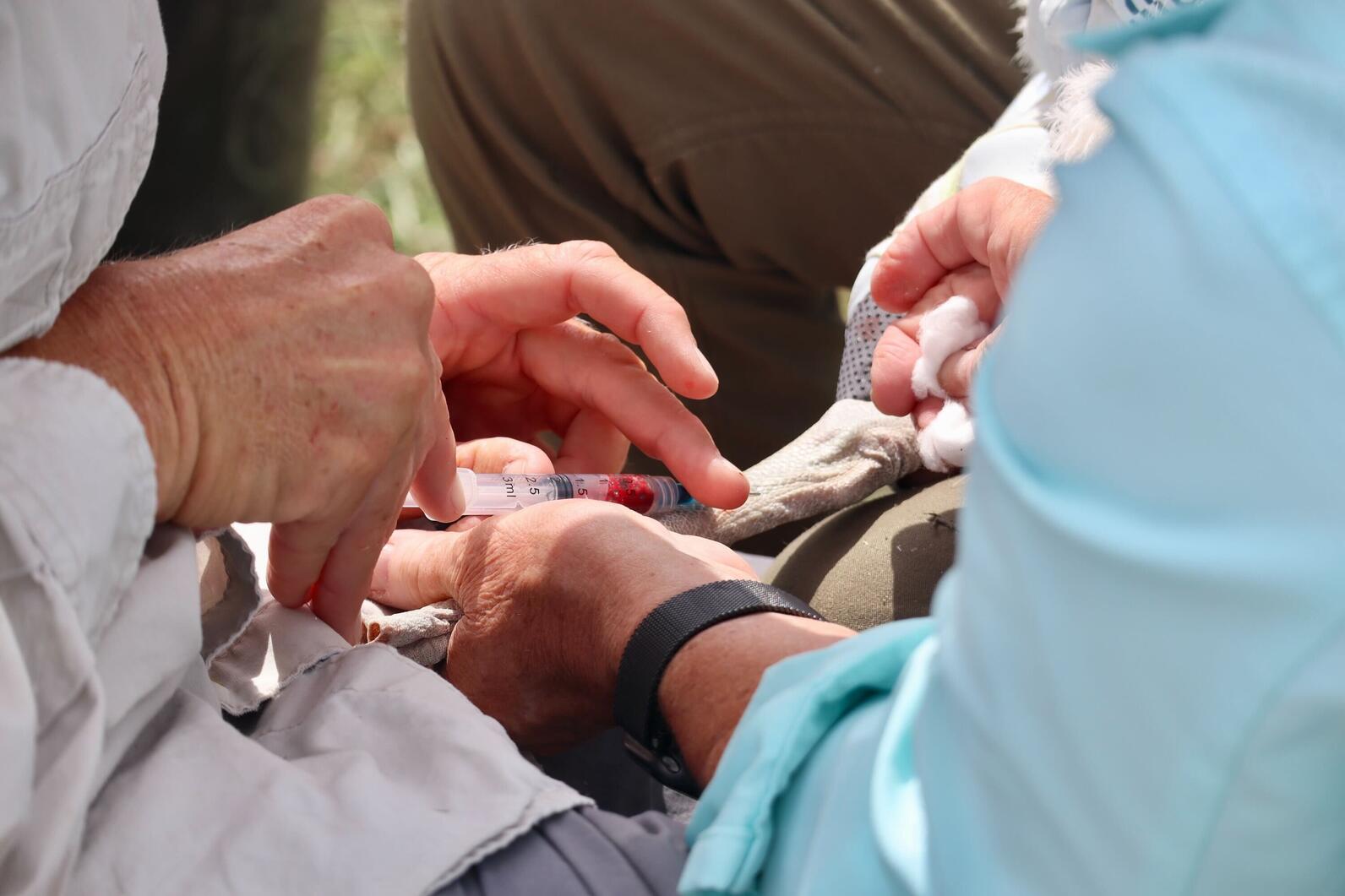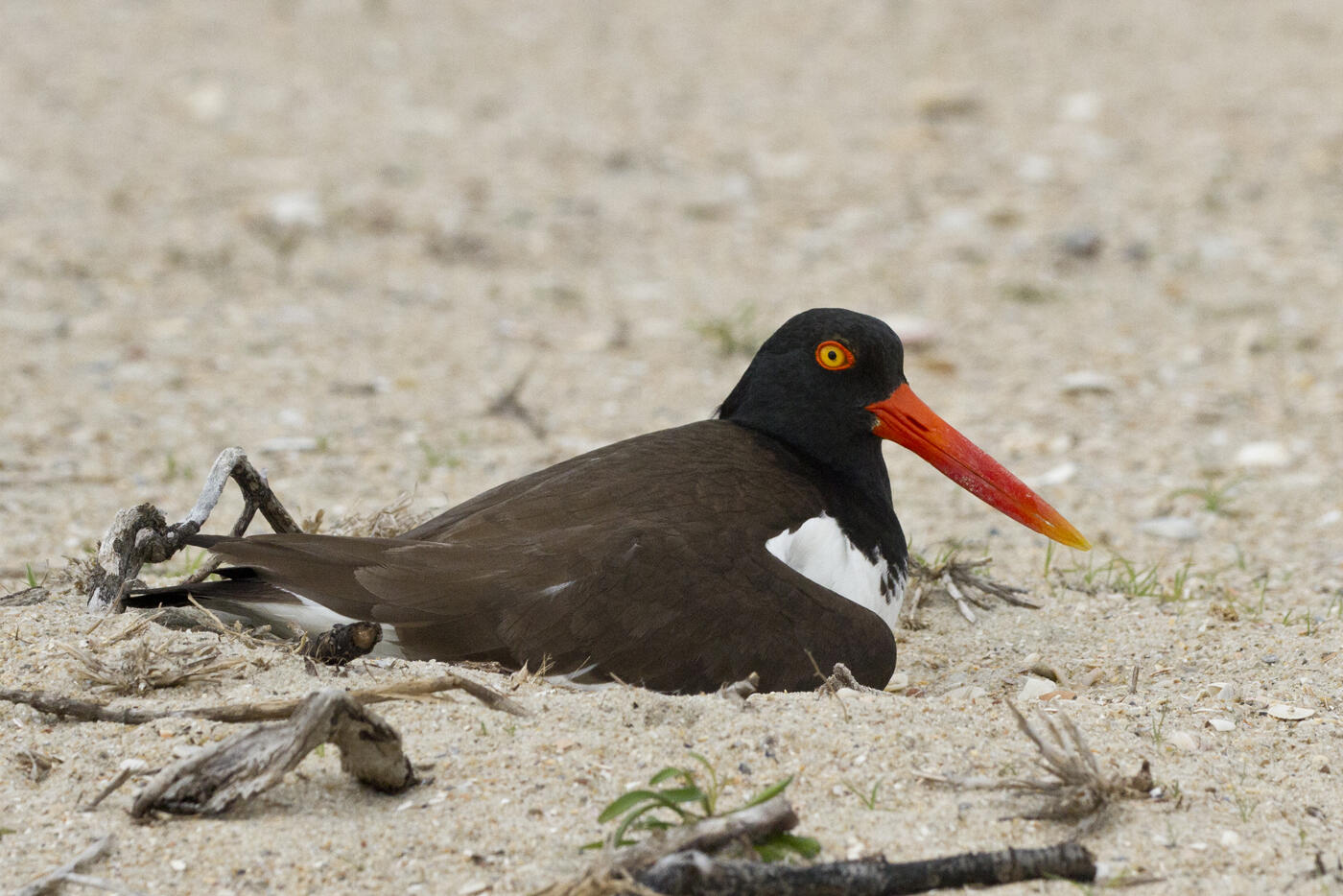Coastal nesting birds faced a number of challenges this year, including coyote and avian depredation, human disturbance, and habitat constraints, which resulted in a below average year for many of our coastal nesting waterbirds. Despite these pressures, birds persisted and brought thousands of chicks into the world from the Lower Cape Fear River, Wrightsville Beach, Lea-Hutaff Island, and beyond.
We also had our first Piping Plover chick to successfully fledge on Lea-Hutaff Island in over 15 years. The birds’ success depends on having a safe place to nest where they won’t be disturbed by people or dogs, which is why we monitor the island year-round, conduct predator management, and try to give them the best chance at survival.
This summer our coastal team launched new projects to understand more about the birds nesting at our sanctuaries and how to better protect them. Thanks to the additional capacity of two coastal technicians, we were able to collect research data while continuing our annual monitoring and conservation efforts. That work is already starting to pay off with a banded Sandwich Tern being spotted in Florida and a celebrity Piping Plover returning to Masonboro Inlet for the winter.

Every year our sanctuaries are home to 40% of the state’s nesting waterbirds including Black Skimmers, Brown Pelicans, Least Terns, Royal and Sandwich Terns, American Oystercatchers, and much more. This year was no different.
We also had the help of 71 volunteer Wrightsville Beach Bird Stewards, who spent more than 4,000 hours monitoring the sanctuary and educating the public about the birds nesting within the posting. According to a report by Independent Sector, the 2024 estimated value of a volunteer hour in North Carolina is $33.49 per hour which totals a value of over $140,000!
Launching new projects and continuing older ones
This summer, we put GPS transmitters on Royal Terns to track their movements during the breeding season and where they go during migration, began collecting poop samples to see what our birds are eating, and continued data collection to understand how PFAS are impacting the health of Brown Pelicans on the Cape Fear River.
All of this work goes hand-in-hand with being able to conserve the places birds need well into the future. By understanding what resources they need during their full annual life cycle, we can ensure North Carolina continues to be a place for birds to thrive.
“The highlight of the summer was being able to launch really cool projects with some of our priority birds and figure out how to collect new samples and data while doing our regular monitoring and management work,” said Lindsay Addison, coastal biologist at Audubon North Carolina.

Black Skimmers
This year, Black Skimmers at the south end of Wrightsville Beach had a challenging season, with human disturbance and a lack of suitable nesting habitat due to over-vegetation and a dredge project. Still, despite setbacks, the colony of about 100 pairs was eventually able to fledge 123 chicks, thanks to the Bird Stewards who keep this very popular beach safe for birds every year.
We also had another successful summer banding skimmers at Cape Lookout National Seashore, where Black Skimmers have been nesting since 2018. There were two colonies this year, one on South Core Banks and the other on North Core Banks and chicks from both received bands. This is the first summer we collected poop samples along with our regular banding efforts. This year makes 873 chicks banded in the state, and as of last February, 73 percent of them had been resighted away from their natal site.
Brown Pelicans
Brown Pelicans had large, successful colonies on two Audubon islands, Battery Island on the Lower Cape Fear River and Beacon Island near Ocracoke inlet. As part of our ongoing PFAS project with partners at UNCW and the USGS, we collected blood samples from pelicans at both colonies. The Cape Fear River pelican population has been exposed to PFAS that were directly discharged into the river for decades by the Chemours plant in Fayetteville, and Beacon Island serves as our control site—presumably less impacted by PFAS.

The blood samples will be used to determine the type and amount of PFAS in their bodies and how well their immune systems are working. This year we also collected swabs from the birds' beaks and cloacas to look for the presence and concentration of common pathogens, another measure of immunological health.
Terns and Oystercatchers
Lea-Hutaff Island is one of the most important sites in the state for nesting Least Terns and Wilson’s Plovers. This year, 922 pairs of Least Terns nested on the island in four colonies, but coyote depredation cut into the terns’ productivity. Nevertheless, all colonies fledged chicks. Wilson’s Plovers are found throughout the island, and this year we found 22 pairs making their home there and fledged chicks late into the summer. Twenty-three pairs of American Oystercatchers also nested on the island, but coyote depredation was a problem for them as well, and they only fledged four chicks, below the productivity goal of 0.5 fledglings/pair.
Other species that nest on the island in smaller numbers include Common Nighthawks, Willets, and Common Terns, but perhaps the biggest news was that the island fledged its first Piping Plover in almost 15 years. A pair had used a similar area last year and hatched its eggs but lost the chicks. This year, one lucky chick out of a brood of three survived. Without dedicated monitoring and the predator management efforts that the monitoring guided, many fewer nests would have turned out chicks from Lea-Hutaff Island this year.
We are also continuing to monitor sea turtle nesting on Lea-Hutaff Island. We’ve had 15 loggerhead sea turtle nests this year, with 12 false crawls. With our partners at the NC Wildlife Resources Commission, we’re continuing to monitor the remaining nests to determine overall nest success and estimate the number of hatchlings that make it into the ocean. This demonstrates the value of protecting these habitats for birds, as other species can also benefit from safe places to lay their nests.

On the Cape Fear River, South Pelican Island was once again a Royal and Sandwich Tern refuge with thousands of chicks fledging from the island this year. Across two days, volunteers helped us band 2,045 Royal Terns (487 of which got field readable bands) and 529 Sandwich Terns (186 of which got field readable bands). We also gathered poop and feather samples which will provide additional information about the terns’ foraging habits.
American Oystercatchers had a below average year on the river, with nests and chicks lost to a variety of causes, including overwash from ship wakes and high tides and likely Bald Eagle depredation on large chicks. Over all of the sites we monitor on the river, 86 pairs fledged just 24 chicks, or 0.28 fledglings/pair. “We lost several multiple large chicks from several sites,” Addison said. “There aren't a lot of reasons they would fail at that age, but there is a growing population of eagles in the area and we observed them hunting other species’ chicks.”
However, they are long-lived birds with many years to attempt to raise young and the river remains one of the state’s most significant strongholds for oystercatchers, hosting about 100 pairs annually, or a little more than a quarter of the state’s breeding population. That’s why our habitat restoration and management work on the river is so important.
Even with the right habitat, however, other challenges remain as this year demonstrates. “There are many pieces to the puzzle,” said Addison. “The overall health and success of our nesting birds depends on people respecting posted nesting sanctuaries, keeping their dogs away from nesting areas, and being a good steward of the environment. Thank you to everyone who helped us keep our favorite feathered friends safe this year.”
*Note that all banding, marking, and sampling is being conducted under a federally authorized Bird Banding Permit issued by the U.S. Geological Survey’s Bird Banding Lab.










